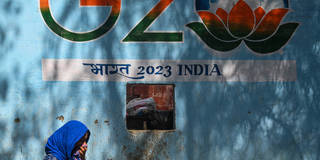
India’s Fake Growth Story
Indian authorities are downplaying inconvenient macroeconomic facts so that they can celebrate seemingly flattering headline figures ahead of hosting the G20 summit. But in covering up the growing struggles faced by the vast majority of Indians, they are playing a cynical and dangerous game.
PRINCETON – Behind the billboards in Delhi advertising this month’s G20 summit are slums whose residents can no longer earn a living. Their roadside stalls and shops have been demolished, lest they tarnish Prime Minister Narendra Modi’s carefully curated image of a rising India.